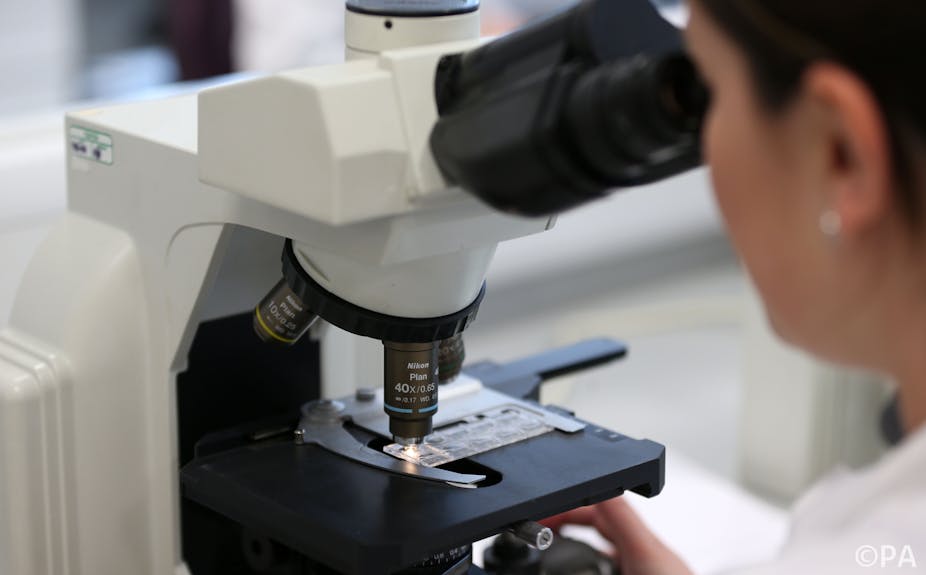The liver is a special organ. Mature liver cells - or hepatocytes - have the capacity to continually divide and repair damage. But only so far. Excessive drinking and chronic liver disease, for example, can lead to irreparable damage and the need for a transplant.
Unlike some other cells, replicating how liver cells grow in a lab is incredibly difficult. Now researchers at MIT say they have found a dozen chemical compounds that help liver cells maintain their function outside the body. Not only that but the the cells are able to multiply and produce new tissue.
Dr Sangeeta Bhatia, Director of the Laboratory for Multiscale Regenerative Technologies at MIT, said their findings could mean “off-the-shelf” livers that can be transplanted rather than relying on a transplant from an organ donor.
It’s early days. But researchers say their work paves the way for artificially engineered tissue, which could help treat many people suffering chronic liver diseases such as hepatitis C.
Liver disease is now the fifth largest killer in the UK, and the British Liver Trust, a national charity, estimates that around 2 million people suffer a liver problem at any one time. The number of people dying from liver disease in England increased by 25% between 2001 and 2009.
But liver tissue engineering, compared to other organ tissue engineering, is difficult. “It’s a paradox because we know liver cells are capable of growing, but somehow we can’t get them to grow,” Bhatia said.
“The liver has many specialised functions that are vital for life; virtually all of these are lost rapidly when liver cells (hepatocytes) are isolated from the body - including their ability to replicate.”
They start to deteriorate straight away, she said, but most noticeably after a few days.
However, the MIT team, including MIT graduate Jing Shan and researchers from the Broad Institute, Harvard Medical School and Wisconsin University, were able to grow liver cells by identifying and using a dozen chemical compounds that help liver cells to continue to function.
Bhatia had previously managed to prolong liver cell function, albeit temporarily, by mixing liver cells “like liver polka dots” with fibroblast cells from mice - a type of stem cell and the most common cells found in connective tissues in animals - to stabilise them. The researchers then simplified this system, instead arranging cells “like a layer cake”. While the cells still don’t live for too long, they did so long enough for the researchers to discover chemical compounds that drive replication.
The team tested how 12,500 different chemicals affected cell growth and function and found some 12 compounds which helped the liver cells to maintain function and grow tissue.
Last year, Japanese scientists said they had induced stem cells to create a liver-like tissue in a dish by reprogramming human skin cells. After nine days, the team produced a biochemical marker contained in hepatocytes, the mature liver cells.
But the MIT team’s work goes further in maintaining existing hepatocytes and the team now plans to embed treated liver cells in mice using specially created “scaffolds” to see whether they can create replacement liver tissues.
They say they are also exploring the possibility of developing the chemical compounds into drugs that could be used in people to regenerate damaged human liver tissue.
Bhatia said their work offered a way to solve “two of the longstanding challenges in liver tissue engineering — growing a large supply of liver cells outside the body and getting the tissues to graft to the transplant recipient.”
“An immediate application would be in drug testing,” Professor Philip Newsome, Clinical Director of the Birmingham University Stem Cell Centre said.
“Many drugs fail to enter clinical practice because of unwanted interaction with the liver. If these drugs could be tested on functioning liver cells it would be a great advantage.”
Another application could be in cell infusions, where functioning cells are harvested - currently from a donor - are introduced into another patient. Though not everyone supports this approach, Newsome says infusions can be a way of treating those who can’t undergo liver transplants or in children, for example.
“Most people have cirrhosis, where the liver is damaged over many years and in time builds scar tissue,” Newsome said. “With cirrhosis and more advanced liver damage, you can get improvement but it’s unlikely a liver will completely recover.”
He said th MIT research has great potential, but creating whole organs could still be “a little way off”.

